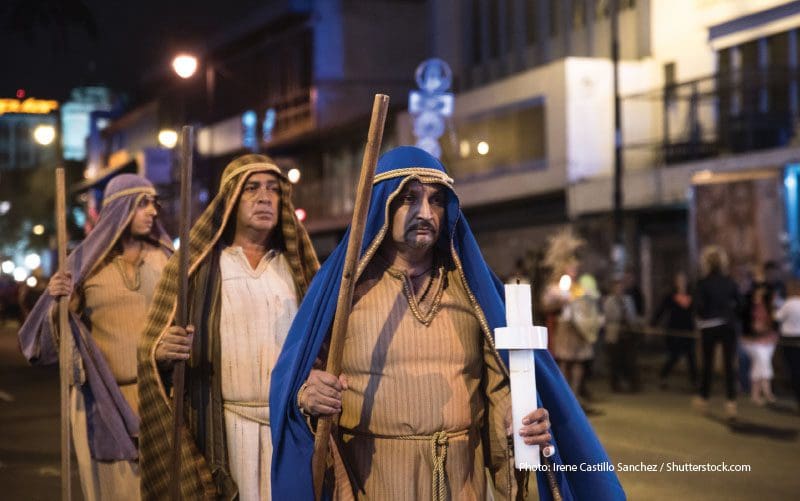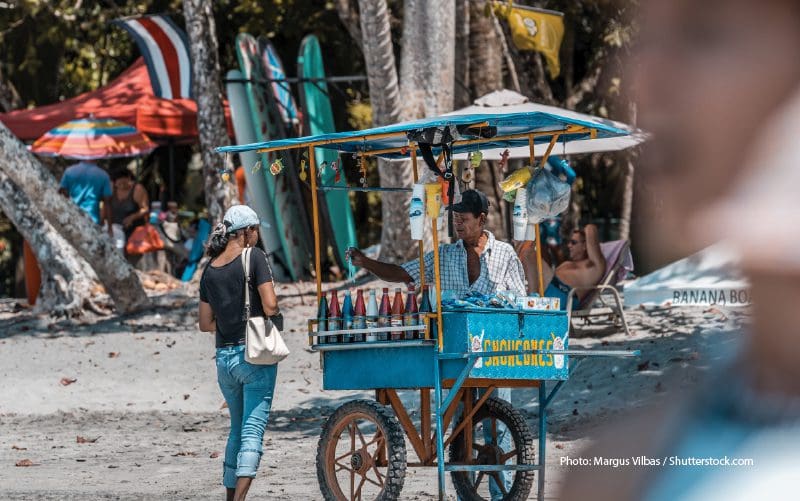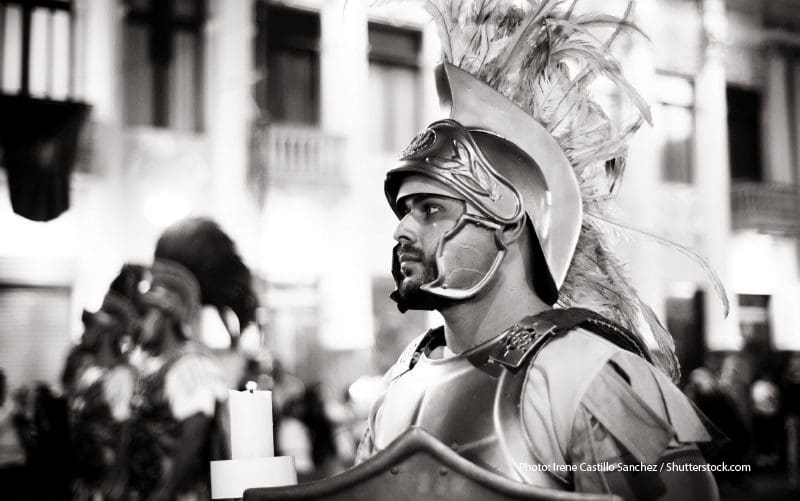
Semana Santa: A Jubilant Holiday in Latin America
Photo above: Procession of Silence, Holy Thursday in San José, Costa Rica
Semana Santa — known in English as Holy Week — is a highly anticipated holiday in Costa Rica as it is throughout Latin America. From Antigua in Guatemala and Copacabana in Bolivia, to Ayacucho in Perú, people embrace the celebration of a colorful culture where gastronomy, religion and leisure converge.
A religious tradition
Historically, the Catholic religion has predominated in Latin American countries, with many festive calendar dates inherently associated with this faith. Like Holy Week in other parts of the world, Semana Santa marks the week in March or April, for any given year, beginning on Palm Sunday and ending on Easter Sunday. Indeed, Semana Santa is regarded the most important religious holiday in Latin America, commemorating the decisive moments in the life of Jesus Christ. Processions, masses, festivals, and parades take place during the week to depict Jesus’ return to Jerusalem, his crucifixion and his resurrection.
Many processions feature lavish stagings of biblical events, with live actors portraying pivotal characters such as the apostles, the Virgin Mary, Mary Magdalene, Saint Joseph and Roman soldiers … all while singing and carrying incense. Other processions incorporate effigies instead of performers. In some countries, these processions pass through multi-colored sawdust carpets boasting remarkable designs.
For much of the population,
it’s a whole week off from work or school.
Costa Rica’s liturgical events during Semana Santa are held country-wide. Three of the most famous processions are hosted, respectively, in downtown San José, Tres Rios in Cartago province, and in San Joaquin de Flores in Heredia province.
Downtime
Notwithstanding the religious influences, Semana Santa is also a major vacation period in Latin America. For much of the population, it’s a whole week off from work or school.
In Costa Rica, most public offices are closed the entire week, while some public banks and hospitals are open Monday to Wednesday. Thursday and Friday are mandatory public holidays, to the extent that tourism becomes the only commercial activity on these days. Most supermarkets and other retail stores close
their doors, as well as business and professional premises. Access to transportation is reduced, and train service is interrupted until Easter Monday.
For pretty much all kinds of shopping trips and errands, everyone is well advised to plan ahead and get them done before these holiday closures occur.
Empty cities but crowded coasts: it’s beach time!

Despite living in a latitude that delivers beach weather year-round, Costa Ricans are especially keen to head for their favorite coast during Semana Santa. There is no question it’s a peak vacation season here, as in many Latin American countries, where traffic jams at main exit and entrance points are part of an ever-growing tradition. Packed-to-capacity restaurants and hotels are part of this seasonal norm, so be sure to make advance reservations to avoid learning the hard way.
The most visited beaches on Costa Rica’s Pacific coast are Jacó, Tamarindo, Puntarenas, Samara, Quepos and Manuel Antonio National Park. The most popular Caribbean beach destinations are Limón, Cahuita National Park and the Puerto Viejo area.
Foodie favorites
Culinary indulgence tends to be synonymous with most celebrations of seasonal holidays worldwide, and Semana Santa in Latin America is no exception. Seafood, a favorite menu staple every day of the year, takes on added significance throughout Lent, the period between Ash Wednesday and Easter Sunday. In the tradition of conservative Catholic beliefs, meat should not be consumed on those days preceding and during Holy Week.

Empanadas de chiverre
Not surprisingly, it’s a time when Costa Ricans enjoy ceviche, a raw fish dish made with lime juice, cilantro, onion and garlic. Rice with shrimp, fish soup and tuna dishes are also foodie favorites. If you crave something sweet, chiverre is a must-try. It’s a sweet jelly made from a huge squash with diverse uses as a jam component of desserts, or as the main ingredient in empanadas de chiverre (pasty), a popular Tico holiday treat.
When it comes to raising a glass of holiday cheer, feel free for the most part to toast the season. Costa Rica’s national government no longer prohibits the sale of alcohol on Holy Thursday and Good Friday, although municipal governments have the discretion to do so.
Make it your own
For many, Semana Santa is a time of reflection and contemplation. For others, it’s a welcome break from routine when the right mix of rest and recreation is just what they need. No matter what your preference, there’s no better place than Costa Rica for embracing old and new traditions to make this special holiday your own.

